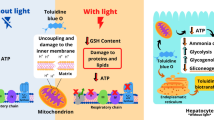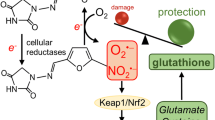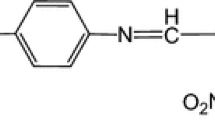Abstract
Data regarding tellurium (Te) toxicity are scarce. Studies on its metabolism, performed mainly in bacteria, underline a major role of reactive oxygen species (ROS). We investigated whether tellurite undergoes redox cycling leading to ROS formation and cancer cell death. The murine hepatocarcinoma Transplantable Liver Tumor (TLT) cells were challenged with tellurite either in the presence or in the absence of different compounds as N-acetylcysteine (NAC), 3-methyladenine, BAPTA-AM, and catalase. NAC inhibition of tellurite-mediated toxicity suggested a major role of oxidative stress. Tellurite also decreased both glutathione (GSH) and ATP content by 57 and 80%, respectively. In the presence of NAC however, the levels of such markers were almost fully restored. Tellurite-mediated ROS generation was assessed both by using the fluorescent, oxidation-sensitive probe dichlorodihydrofluorescein diacetate (DCHF-DA) and electron spin resonance (ESR) spectroscopy to detect hydroxyl radical formation. Cell death occurs by a caspase-independent mechanism, as shown by the lack of caspase-3 activity and no cleavage of poly(ADP-ribose)polymerase (PARP). The presence of γ-H2AX suggests tellurite-induced DNA strand breaking, NAC being unable to counteract it. Although the calcium chelator BAPTA-AM did show no effect, the rapid phosphorylation of eIF2α suggests that, in addition to oxidative stress, an endoplasmic reticulum (ER) stress may be involved in the mechanisms leading to cell death by tellurite.




Similar content being viewed by others
References
Anzai K, Aikawa T, Furukawa Y, Matsushima Y, Urano S, Ozawa T (2003) ESR measurement of rapid penetration of DMPO and DEPMPO spin traps through lipid bilayer membranes. Arch Biochem Biophys 415:251–256
Attebery M, Sailer BL (2002) Detection of apoptosis occurring in promyelocytic (line HL-60) cell populations induced by novel organotellurium compounds. BIOS 73:52–60
Benites J, Rojo L, Valderrama JA, Taper H, Buc Calderon P (2008) Part 1: effect of vitamin C on the biological activity of two euryfurylbenzoquinones on TLT, a murine hepatoma cell line. Eur J Med Chem 43:1813–1817
Chasteen TG, Bentley R (2003) Biomethylation of selenium and tellurium: microorganisms and plants. Chem Rev 103:1–25
Chasteen TG, Fuentes DE, Tantaleán JC, Vásquez CC (2009) Tellurite: history, oxidative stress, and molecular mechanisms of resistance. FEMS Microbiol Rev 33:820–832
Chau YK, Wong PTS (1986) Organic group VI elements in the environment. In: Craig PJ (ed) Organometallic compounds in the environment. Wiley & Sons, New York, p 274
Chen F, Vallyathan V, Castranova V, Shi X (2001) Cell apoptosis induced by carcinogenic metals. Mol Cell Biochem 222:183–188
Cohn VH, Lyle JA (1966) Fluorimetric assay for glutathione. Anal Biochem 14:434–440
Crokart N, Radermacher K, Jordan BF, Baudelet C, Cron GO, Grégoire V, Beghein N, Bouzin C, Feron O, Gallez B (2005) Tumour radiosensitization by anti-inflammatory drugs: evidence for a new mechanism involving the oxygen effect. Cancer Res 65:7911–7916
Ding WJ, Hasegawa T, Peng D, Hosaka H, Seko Y (2002) Preliminary investigation on the cytotoxicity of tellurite to cultured HeLa cells. J Trace Elem Med Biol 16:99–102
Duerksen JD, Connor KW (1978) Periodicity and fragment size of DNA from mouse TLT hepatoma chromatin and chromatin fractions using endogenous and exogenous nucleases. Mol Cell Biochem 19:93–112
Engman L, Kanda T, Gallegos A, Williams R, Powis G (2000) Water-soluble organotellurium compounds inhibit thioredoxin reductase and the growth of human cancer cells. Anti-Cancer Drug Design 15:323–330
Feldmann J, Grumping R, Hirner AV (1994) Determination of volatile metal and metalloid compounds in gases from domestic waste deposits with GC/ICP-MS. J Anal Chem 350:228–234
Harrison PR, Lanfear J, Wu L, Fleming J, McGarry L, Blower L (1997) Chemopreventive and growth inhibitory effects of selenium. Biomed Environ Sci 10:235–245
Hirner AV, Krupp E, Schulz F, Koziol M, Hofmeister W (1998) Organometal(loid) species in geochemical exploration: preliminary qualitative results. J Geochem Explor 64:133–139
Itoh K, Chiba T, Takahashi S, Ishii T, Igarashi K, Katoh Y, Oyake T, Hayashi N, Satoh K, Hatayama I, Yamamoto M, Nabeshima Y (1997) An Nrf2/small Maf heterodimer mediates the induction of phase II detoxifying enzyme genes through antioxidant response elements. Biochem Biophys Res Commun 236:313–322
Keall J, Martin N, Tunbridge R (1946) A report of three cases of accidental poisoning by sodium tellurite. Br J Ind Hyg 3:175–176
Lampert P, Garro F, Pentschew A (1970) Tellurium neuropathy. Acta Neuropathol 15:308–317
Lau A, Villeneuve NF, Sun Z, Wong PK, Zhang DD (2008) Dual roles of Nrf2 in cancer. Pharmacol Res 58:262–270
Lowry O, Rosebrough N, Farr L, Randall R (1951) Protein measurement with the Folin phenol reagent. J Biol Chem 183:265–275
Lu J, Kaeck M, Jiang C, Wilson AC, Thompson HJ (1994) Selenite induction of DNA strand breaks and apoptosis in mouse leukemic L1210 cells. Biochem Pharmacol 47:1531–1535
Maciel E, Bolzan RC, Braga AL, Rocha JB (2000) Diphenyl diselenide and diphenyl ditelluride differentially affect delta-aminolevulinate dehydratase from liver, kidney, and brain of mice. J Biochem Mol Toxicol 14:310–319
McNaughton M, Engman L, Birmingham A, Powis G, Cotgreave IA (2004) Cyclodextrin-derived diorganyl tellurides as glutathione peroxidase mimics and inhibitors of thioredoxin reductase and cancer cell growth. J Med Chem 47:233–239
Moinova HR, Mulcahy RT (1999) Up-regulation of the human gamma-glutamylcysteine synthetase regulatory subunit gene involves binding of Nrf-2 to an electrophile responsive element. Biochem Biophys Res Commun 261:661–668
Moretto MB, Funchal C, Zeni G, Rocha JB, Pessoa-Pureur R (2005) Organoselenium compounds prevent hyperphosphorylation of cytoskeletal proteins induced by the neurotoxic agent diphenyl ditelluride in cerebral cortex of young rats. Toxicology 210:213–222
Noda Y, Suzuki T, Kohara A, Hasegawa A, Yotsuyanagi T, Hayshi M, Sofuni T, Yamanaka K, Okada S (2002) In vivo genotoxicity evaluation of dimethylarsinic acid in Muta™ Mouse. Mutat Res 513:205–212
Nogueira C, Rotta L, Perry M, Souza D, Da Rocha J (2001) Diphenyl diselenide and diphenyl ditelluride affect the rat glutamatergic system in vitro and in vivo. Brain Res 906:157–163
Ogra Y, Kobayashi R, Ishiwata K, Suzuki KT (2007) Identification of urinary tellurium metabolite in rats administered sodium tellurite. J Anal At Spectrom 22:153–157
Ogra Y, Kobayashi R, Ishiwata K, Suzuki KT (2008) Comparison of distribution and metabolism between tellurium and selenium in rats. J Inorg Biochem 102:1507–1513
Redman C, Xu JJ, Peng Y, Scott JA, Payne C, Clark LC, Nelson MA (1997) Involvement of polyamines in selenomethionine induced apoptosis and mitotic alterations in human tumour cells. Carcinogenesis 18:1195–1202
Rigobello MP, Gandin V, Folda A, Rundlöf AK, Fernandes AP, Bindoli A, Marzano C, Björnstedt M (2009) Treatment of human cancer cells with selenite or tellurite in combination with auranofin enhances cell death due to redox shift. Free Radic Biol Med 47:710–721
Sailer BL, Prow T, Dickerson S, Watson J, Liles N, Patel SJ, Van Fleet-Stalder V, Chasteen TG (1999) Bacterial cytotoxicity and induction of apoptosis in promyelocytic (line HL-60) cells by novel organotellurium compounds. Environ Toxicol Chem 18:2926–2933
Sailer BL, Liles N, Dickerson S, Sumners S, Chasteen TG (2004) Organotellurium compound toxicity in a promyelocytic cell line compared to non-tellurium-containing organic analogue. Toxicol In Vitro 18:475–482
Schroder M, Kaufman RJ (2005) The mammalian unfolded protein response. Annu Rev Biochem 74:739–789
Seglen PO, Gordon PB (1982) 3-Methyladenine: specific inhibitor of autophagic/lysosomal protein degradation in isolated rat hepatocytes. Proc Natl Acad Sci USA 79:1889–1892
Stadtman TC (1974) Selenium biochemistry. Science 183:915–922
Stadtman TC (1980) Selenium-dependent enzymes. Annu Rev Biochem 49:93–110
Stangherlin EC, Favero AM, Zeni G, Rocha JB, Nogueira CW (2006) Exposure of mothers to diphenyl ditelluride during the suckling period changes behavioural tendencies in their offspring. Brain Res Bull 69:311–317
Taper HS, de Gerlache J, Lans M, Roberfroid M (1987) Non-toxic potentiation of cancer chemotherapy by combined C and K3 vitamin pre-treatment. Int J Cancer 40:575–579
Taylor A (1996) Biochemistry of tellurium. Biol Trace Element Res 55:231–239
Verrax J, Buc Calderon P (2009) Pharmacologic concentrations of ascorbate are achieved by parenteral administration and exhibit antitumoral effects. Free Radic Biol Med 47:32–40
Verrax J, Cadrobbi J, Marques C, Taper H, Habraken Y, Piette J, Buc Calderon P (2004) Ascorbate potentiates the cytotoxicity of menadione leading to an oxidative stress that kills cancer cells by a non-apoptotic caspase-3 independent form of cell death. Apoptosis 9:223–233
Wagner M, Toews AD, Morell P (1995) Tellurite specifically affects squalene epoxide: investigations examining the mechanism of tellurium-induced neuropathy. J Neurochem 64:2169–2176
Wang XJ, Sun Z, Villeneuve NF, Zhang S, Zhao F, Li Y, Chen W, Yi X, Zheng W, Wondrak GT, Wong PK, Zhang DD (2008) Nrf2 enhances resistance of cancer cells to chemotherapeutic drugs, the dark side of Nrf2. Carcinogenesis 29:1235–1243
Weerasinghe P, Hallock S, Tang SC, Liepins A (2001) Role of Bcl-2 family proteins and caspase-3 in sanguinarine-induced bimodal cell death. Cell Biol Toxicol 17:371–381
Widy-Tyszkiewicz E, Piechal A, Gajkowska B, Smialek M (2002) Tellurium-induced cognitive deficits in rats are related to neuropathological changes in the central nervous system. Toxicol Lett 131:203–214
Wroblesky F, Ladue J (1955) Lactic deshydrogenase activity in blood. Proc Soc Exp Biol Med 90:210–213
Yamada N, Kojima R, Uno M, Akiyama T, Kitaura H, Narumi K, Nishiuchi K (2002) Phase-change material for use in rewritable dual-layer optical disk. Proc SPIE 4342:55–63
Zhu Z, Kimura M, Itokawa Y, Aoli T, Takahashi JA, Nakatsu S, Oda Y, Kikuchi H (1996) Apoptosis induced by selenium in human glioma cell lines. Biol Trace Elem Res 54:123–134
Acknowledgements
The authors express their gratitude to Véronique Allaeys for excellent technical assistance. Financial support is gratefully acknowledged to Fondecyt Grant # 1090097 and to Vicerrectoría de Investigación y Desarrollo, Departamento de Investigaciones Científicas y Tecnológicas (DICYT), Universidad de Santiago de Chile. JMS was supported by a doctoral fellowship from MECESUP UCH407 and Becas Chile (Pasantia Doctoral en el Extranjero), Chile.
Author information
Authors and Affiliations
Corresponding author
Rights and permissions
About this article
Cite this article
Sandoval, J.M., Levêque, P., Gallez, B. et al. Tellurite-induced oxidative stress leads to cell death of murine hepatocarcinoma cells. Biometals 23, 623–632 (2010). https://doi.org/10.1007/s10534-010-9316-2
Received:
Accepted:
Published:
Issue Date:
DOI: https://doi.org/10.1007/s10534-010-9316-2




